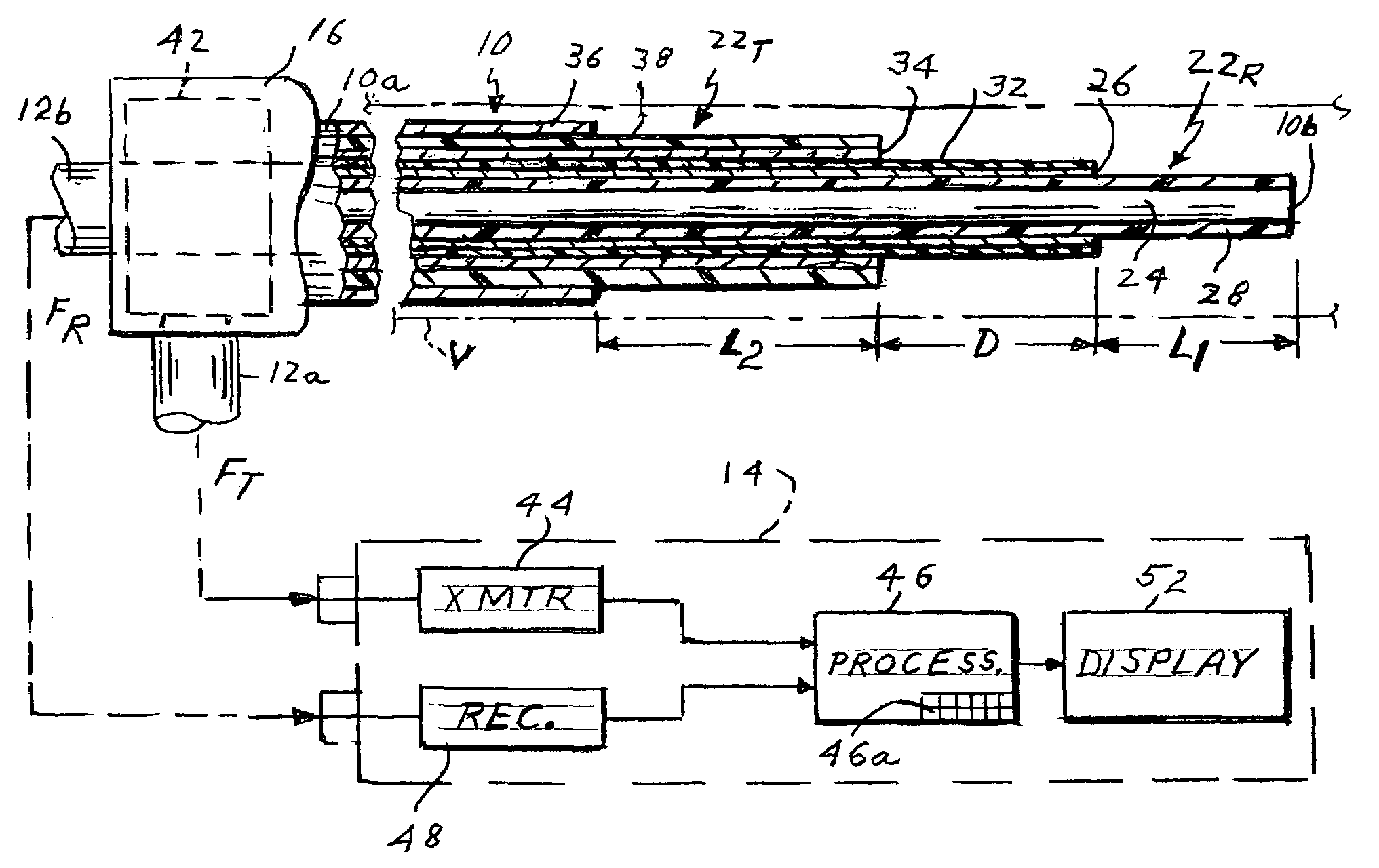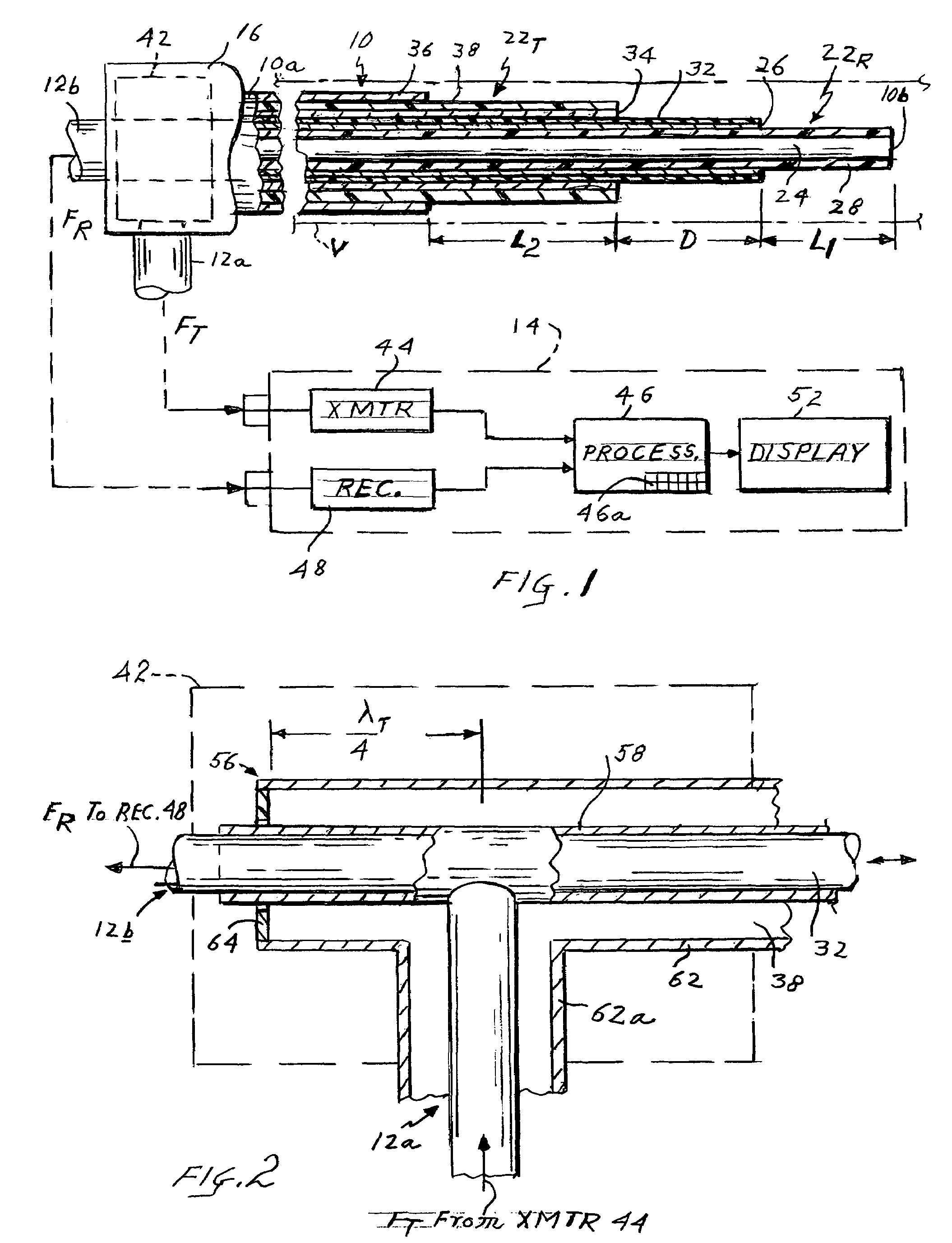Apparatus for measuring intravascular blood flow
a technology for intravascular blood flow and measuring apparatus, which is applied in the field of measuring intravascular blood flow, can solve the problems of not being able to precisely not being able to accurately measure the distance between the point of saline injection and the patient's blood stream, and not being able to accurately measure the distance between the point of saline injection and the sensor. , to achieve the effect of improving the accuracy of blood
- Summary
- Abstract
- Description
- Claims
- Application Information
AI Technical Summary
Benefits of technology
Problems solved by technology
Method used
Image
Examples
Embodiment Construction
[0017]Referring to FIG. 1 of the drawing, the present apparatus comprises a flexible catheter shown generally at 10 for insertion into a blood vessel V. Catheter 10 is connected by coaxial cables 12a and 12b to a control unit 14. The catheter has a proximal end 10a to which cables 12a and 12b are connected by way of a fitting or connector 16 and a distal end or tip 10b. In a typical procedure, the catheter may be inserted into the patient through a standard introducer inserted in the patient's neck. The introducer is typically 8.5 French, which the catheter may be 6 or 7 French. The catheter 10 goes from the jugular through the right side of the heart and then into the pulmonary artery.
[0018]As shown in FIG. 1, catheter 10 incorporates coaxial inner and outer antennas 22R and 22T. The inner antenna 22R comprises a coaxial cable consisting of an inner conductor 24 and an outer conductor 26 separated by a dielectric layer 28, the outer conductor 26 being surrounded by a thin dielectri...
PUM
 Login to View More
Login to View More Abstract
Description
Claims
Application Information
 Login to View More
Login to View More - R&D
- Intellectual Property
- Life Sciences
- Materials
- Tech Scout
- Unparalleled Data Quality
- Higher Quality Content
- 60% Fewer Hallucinations
Browse by: Latest US Patents, China's latest patents, Technical Efficacy Thesaurus, Application Domain, Technology Topic, Popular Technical Reports.
© 2025 PatSnap. All rights reserved.Legal|Privacy policy|Modern Slavery Act Transparency Statement|Sitemap|About US| Contact US: help@patsnap.com


